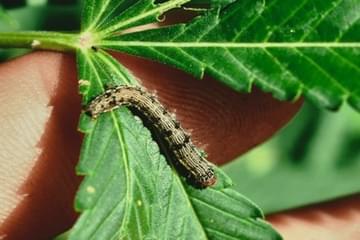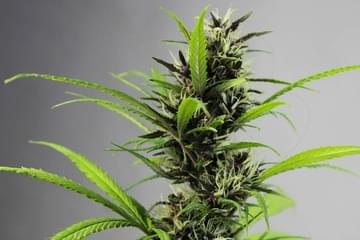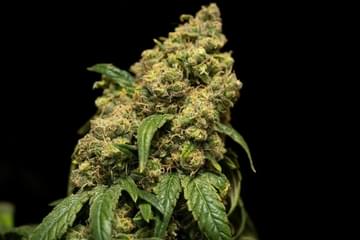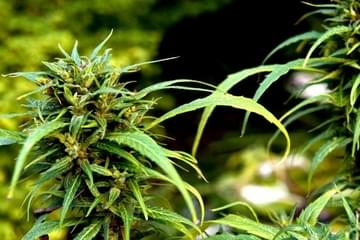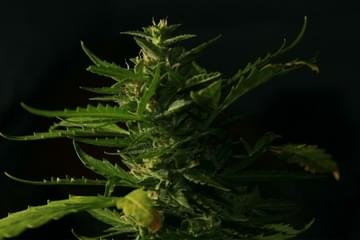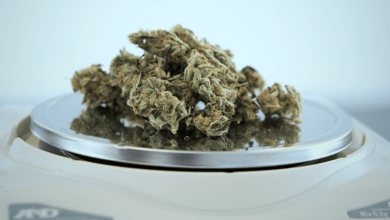
What's the Difference Between Indoor vs. Outdoor Grown Weed
Published on 4/11/21
When you're shopping for your next marijuana purchase, there are a few distinguishing characteristics that separate the weed on the menu. Of course, there is the classification between indica, sativa and hybrid. Then there are high-THC and high-CBD buds and eventually, thousands of different strains each with a unique genetic makeup. When it comes to each specific batch of flower though, one of the biggest signifiers of bud size, trichome density and general bud appearance is whether the specific plant was grown outside or inside.
The indoor vs. outdoor weed debate has been raging within the cannabis industry for a couple of decades now. And while market pricing typically puts more value in indoor-grown marijuana, those feelings are not typically shared by the legacy outdoor growers in Northern California, Washington and Oregon. So what are the real differences between indoor vs. outdoor marijuana? In this article, we'll go over the basics of how weed is grown in each setting and then break down the main differences between outdoor and indoor cannabis flower.
Growing Cannabis Outdoors
 Unsplash
UnsplashJust like all plants, cannabis comes from mother Earth and originated outdoors. And while many growers have moved indoors, there are cannabis cultivators around the world who swear by sun-grown, fully outdoor crops. Due to weather, sunlight, soil and space, Northern California has grown into the global hub for outdoor cannabis cultivation, with much of the country's outdoor weed supply coming from just a few NorCal counties.
Every spring, outdoor growers across the West Coast pick out new strains for their garden by way of seed or clone. Unlike some other fruits or vegetables, outdoor cannabis is typically germinated indoors for a few weeks to a month, until its root structure is strong enough to withstand outside conditions. Once it is ready to be planted, growers prepare nutrient-rich soil beds and tuck their plants in where they are in full view of the sun and can soak up as much light as possible.
After daily watering, nutrient feeding and strategic pruning, the weed plants will grow as large as their space allows, with a late October offering a bountiful harvest of ripe buds ready to be picked, dried, trimmed and cured. Because it takes nearly the whole year for plants to grow to maturity outdoors, full-sun cannabis cultivators only get one season to propagate their best buds.
Growing Cannabis Indoors
 Unsplash
UnsplashCannabis cultivators initially moved their plants inside as a way to avoid the prying eyes of the police. Unlike outdoor gardens, grow sites hidden in warehouses, basements and other buildings are hard to see from a helicopter and don't require the specialized weather conditions of the West Coast or the Middle East. As growers set up lights, fans and humidity controls, they quickly discovered that meticulously controlling every aspect of the plant's life cycle can speed up growing cycles and improve some aspects of cannabinoid production and standardization.
Over the past few decades, cannabis cultivators across the globe have embraced indoor growing, honing hydroponic, aeroponic and other highly-specialized techniques. In a modern indoor commercial cannabis operation, each flowering room is packed with plants and can be harvested as many as six times per year.
What Is The Difference Between Indoor and Outdoor Weed?
 Unsplash
UnsplashPlant Yield
The most obvious difference between indoor and outdoor weed is the size of the mature plants and the amount of bud that each plant yields. Because they are grown with all the space of nature, outdoor plants can grow as high as 6,7 or even 10 feet tall by the time they are ready to harvest. Indoor plants, on the other hand, can only grow as large as the lights and space allow them to. And with grow rooms usually stacked with plants right on top of each other, indoor varieties grow significantly smaller. When it comes time to cut down the valuable bud, each outdoor plant will typically result in a far more smokable product than its indoor counterpart.
Nug Structure
The exact way that cannabis nugs grow has a lot to do with strain genetics but is also a product of the plant's growing environment. Thanks to their uniform light exposure and the precise control of air, nutrients, water and humidity, indoor-grown cannabis buds tend to be dense, relatively uniform and covered in trichomes. Outdoor buds though are exposed to different amounts of light depending on where they sit on the plant and tend to grow a little bushier and wild.
Trim Job
 Unsplash
UnsplashDifferences in the nug structure and yield between indoor and outdoor-grown cannabis plants also translate to the product's final trim. Because outdoor cannabis plants tend to produce a lot more buds, growers often use automatic trim machines to deal with the bulk load. Indoor weed, on the other hand, tends to come in smaller batches and is typically easier for hand-trimmers to manicure because of its dense structure.
Cannabinoid Content
If you're shopping for flower at your local dispensary, the main selling point for most indoor-grown flower is that it is supposedly more potent than outdoor-grown weed. In most cases, that rule holds since indoor bud generally tests with higher THC content. As outdoor cultivators continue to dial in their techniques though, plenty of full-sun bud is now returning lab tests with THC percentages in the high 20s and low 30s, rivaling the same strains grown indoors. Which is better in the indoor vs. outdoor weed high debate? That all comes down to growing style, experience and of course, genetics.
Terpene Content
Similar to THC content, indoor cannabis is often lauded for its loud terpene profiles. Once again, the precise control of environmental factors allows some green thumbs to bring out the very best in their chosen strain. If you ask outdoor growers though, many will say the sun can bring out unique terpenes profiles that aren't present in indoor weed. We don't have quite enough research to definitively say whether indoor or outdoor flower has the potential for higher terpene content, but in both kinds of cannabis, it relies heavily on specific growing techniques and the skill of experienced cultivators.
Do you swear by indoor flower? Maybe you only smoke outdoor? Let us know more about why you choose one over the other in the comments below!










